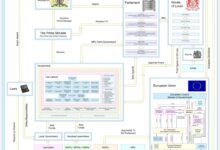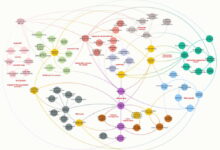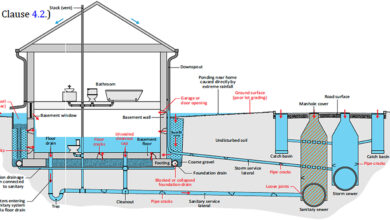System Group: 7 Powerful Insights You Must Know
In today’s fast-evolving digital landscape, understanding the concept of a system group is more crucial than ever. Whether you’re managing IT infrastructure, building organizational hierarchies, or securing enterprise networks, the term ‘system group’ plays a pivotal role. This article dives deep into what a system group truly means, its applications across industries, and why mastering it can transform your operational efficiency. Let’s explore the powerful world of system groups together.
What Is a System Group? A Foundational Understanding

The term system group might sound technical, but at its core, it refers to a collection of interconnected components—be they hardware, software, users, or processes—that function as a unified entity to achieve specific goals. In computing, for example, a system group often denotes a set of user accounts grouped under a common permission set within an operating system or network environment. This allows administrators to manage access rights and resource allocation efficiently.
Defining System Group in Technical Contexts
In IT and system administration, a system group typically refers to a logical grouping of users or services that share similar access privileges. For instance, in Unix-like operating systems such as Linux, system groups are created using commands like groupadd and managed via configuration files like /etc/group. These groups help streamline permissions for directories, files, and system resources.
- System groups simplify user management in multi-user environments.
- They enhance security by limiting access based on roles.
- Groups can be local (on a single machine) or part of a centralized directory service like LDAP.
System Group vs. User Group: Key Differences
While both terms involve grouping users, a system group often has a lower-level, operational purpose—such as running background services or managing system daemons—whereas a user group is typically focused on human access control. For example, the daemon group in Linux is a system group used for system processes, not for logging in users.
“A well-structured system group hierarchy is the backbone of secure and scalable IT infrastructure.” — Linux Administration Best Practices, The Linux Foundation
The Role of System Group in Operating Systems
Operating systems rely heavily on system groups to maintain order, security, and functionality. From Windows to macOS and Linux, every major OS uses some form of group-based permission models. Understanding how these work is essential for system administrators and developers alike.
System Groups in Linux and Unix Systems
In Linux, system groups are categorized into two types: primary and supplementary. Each user has a primary group, and can belong to multiple supplementary groups. System groups like root, bin, sys, and adm are predefined during installation and are used to manage system-level tasks.
- The
rootgroup has the highest privileges and should be restricted to trusted administrators. - Groups like
sudoallow users to execute commands with elevated privileges. - Service-specific groups (e.g.,
www-datafor web servers) isolate processes for security.
For deeper insight, refer to the official GNU C Library documentation on system configuration and group management.
Windows System Groups and Security Identifiers
Microsoft Windows uses a different but equally robust model. Instead of text-based group names, Windows employs Security Identifiers (SIDs) to uniquely identify system groups. Built-in groups like Administrators, Users, and Guests control access to system resources.
- The SYSTEM account is the most powerful built-in account, used by the OS kernel and services.
- Local system groups can be managed via Computer Management or PowerShell.
- Active Directory extends this model to enterprise networks with domain-level groups.
System Group in Network and Enterprise Environments
When scaling beyond a single machine, system groups become even more critical. In enterprise networks, they enable centralized control, policy enforcement, and auditability across thousands of devices and users.
Centralized Group Management with LDAP and Active Directory
Tools like Lightweight Directory Access Protocol (LDAP) and Microsoft Active Directory (AD) allow organizations to define system groups across entire domains. This means a user in New York and another in Tokyo can belong to the same finance-department system group, granting them identical access to shared financial systems.
- LDAP organizes users and groups in a hierarchical directory structure.
- Active Directory integrates system groups with Group Policy Objects (GPOs) for automated configuration.
- Role-Based Access Control (RBAC) is often implemented through system group memberships.
Learn more about LDAP best practices at OpenLDAP.org.
System Group Policies and Compliance
In regulated industries like healthcare and finance, system groups help ensure compliance with standards such as HIPAA, GDPR, and SOX. By assigning users to specific system groups, organizations can enforce strict access controls and generate audit trails.
- Only members of the
compliance-auditgroup can access audit logs. - Automatic deprovisioning removes ex-employees from all system groups upon termination.
- Regular group membership reviews prevent privilege creep.
Security Implications of System Group Mismanagement
While system groups enhance security when used correctly, poor management can lead to serious vulnerabilities. Unauthorized access, privilege escalation, and data breaches often stem from misconfigured or overly permissive group memberships.
Common Security Risks with System Groups
One of the most common issues is the overuse of administrative privileges. When too many users belong to a system group like sudo or Administrators, the attack surface expands significantly.
- Privilege escalation: Attackers exploit weak group permissions to gain higher access.
- Orphaned accounts: Former employees left in system groups pose insider threats.
- Group nesting abuse: Overly complex group hierarchies make auditing difficult.
Best Practices for Securing System Groups
To mitigate these risks, organizations should adopt a zero-trust approach to system group management.
- Apply the principle of least privilege: Only grant access that is absolutely necessary.
- Regularly audit group memberships using tools like Microsoft’s Advanced Threat Analytics.
- Use Just-In-Time (JIT) access for elevated privileges instead of permanent group membership.
“Over 80% of data breaches involve privilege misuse. Proper system group governance is not optional—it’s essential.” — Cybersecurity & Infrastructure Security Agency (CISA), cisa.gov
System Group in DevOps and Cloud Computing
As organizations shift to cloud-native architectures, the concept of system group evolves. In DevOps environments, system groups are no longer just about user permissions—they’re integral to infrastructure as code (IaC), containerization, and CI/CD pipelines.
Managing System Groups in Cloud Platforms
Cloud providers like AWS, Azure, and Google Cloud Platform (GCP) offer Identity and Access Management (IAM) systems that function as advanced system group managers.
- In AWS, IAM Groups allow you to assign permissions to multiple users at once.
- Azure AD supports dynamic group membership based on user attributes.
- GCP uses Cloud Identity to manage system groups across services.
Explore AWS IAM best practices at aws.amazon.com/iam.
System Groups in Containerized Environments
In Docker and Kubernetes, system groups play a role in securing container processes. For example, running a container with a specific group ID (--group-add) ensures it has the right permissions without running as root.
- Pod Security Policies in Kubernetes can restrict which system groups containers can join.
- Using non-root groups enhances container security and reduces vulnerability risks.
- Tools like Podman and OpenShift extend system group controls to rootless containers.
System Group in Organizational and Business Structures
Beyond technology, the concept of a system group applies to business operations. In large organizations, departments or teams can be viewed as system groups—each with defined roles, responsibilities, and access to resources.
Departmental System Groups in Enterprises
Think of HR, Finance, and IT as distinct system groups within a company. Each has its own workflows, data access needs, and compliance requirements. Modern ERP systems like SAP or Oracle use role-based system groups to manage these divisions.
- HR system groups can access employee records but not financial data.
- Finance groups have access to accounting software and payment systems.
- Cross-functional groups enable collaboration while maintaining data boundaries.
System Group Dynamics in Project Management
In project-based organizations, temporary system groups are formed for specific initiatives. These may include members from different departments who are granted temporary access to shared tools and repositories.
- Agile teams function as dynamic system groups with rotating roles.
- Access is granted via project-specific groups in Jira, GitLab, or Asana.
- Upon project completion, group memberships are revoked to maintain security.
Future Trends: AI and Automation in System Group Management
The future of system group management lies in automation and artificial intelligence. As organizations grow more complex, manual group administration becomes unsustainable. AI-driven tools are emerging to predict, assign, and audit group memberships intelligently.
AI-Powered Access Recommendations
Machine learning models can analyze user behavior and suggest appropriate system group memberships. For example, if a new employee in marketing consistently accesses CRM tools, the system might recommend adding them to the marketing-crm group.
- Reduces onboarding time and access delays.
- Minimizes human error in permission assignment.
- Adapts dynamically as roles evolve.
Automated Group Lifecycle Management
Future systems will automatically create, update, and decommission system groups based on organizational changes. Integration with HR systems ensures that when an employee changes roles, their group memberships are updated in real time.
- Event-driven automation triggers group changes upon HR updates.
- Self-service portals allow users to request group access with approval workflows.
- AI monitors for anomalies, such as a user requesting access to unrelated system groups.
How to Create and Manage a System Group: Step-by-Step Guide
Whether you’re setting up a local server or managing a cloud environment, knowing how to create and manage a system group is a fundamental skill. Below is a practical guide for common platforms.
Creating a System Group in Linux
Use the following commands to create and manage a system group on a Linux system:
sudo groupadd developers– Creates a new group named ‘developers’.sudo usermod -aG developers john– Adds user ‘john’ to the developers group.groups john– Verifies the user’s group membership.
For more details, consult the Linux man page for groupadd.
Managing System Groups in Windows Server
In Windows Server, you can manage system groups via GUI or command line:
- Open Computer Management → Local Users and Groups → Groups.
- Right-click to create a new group and add members.
- Use PowerShell:
New-LocalGroup -Name "DevTeam"andAdd-LocalGroupMember -Group "DevTeam" -Member "User1".
What is a system group in IT?
A system group in IT is a collection of users, services, or devices grouped together to manage permissions, access rights, and resource allocation efficiently within an operating system or network environment.
How do system groups improve security?
System groups improve security by enabling role-based access control (RBAC), ensuring users only have access to resources necessary for their role, and reducing the risk of unauthorized access or privilege escalation.
Can system groups be used in cloud environments?
Yes, cloud platforms like AWS, Azure, and GCP use system group-like structures through IAM (Identity and Access Management) to manage user permissions and access policies across services.
What’s the difference between a system group and a user group?
A system group is typically used for system-level processes and services (e.g., running daemons), while a user group is designed for human users and access management. However, the terms are sometimes used interchangeably depending on context.
How often should system group memberships be audited?
Best practices recommend auditing system group memberships at least quarterly, or whenever there are significant organizational changes such as employee departures or role transitions.
Understanding the concept of a system group is no longer optional—it’s a necessity in today’s interconnected digital world. From securing operating systems to enabling seamless collaboration in the cloud, system groups form the backbone of modern IT and organizational structures. By mastering their creation, management, and security, businesses can enhance efficiency, reduce risk, and prepare for the future of automated, AI-driven access control. Whether you’re a system administrator, a DevOps engineer, or a business leader, embracing the power of system groups will empower your organization to thrive in an era of complexity and change.
Further Reading:









